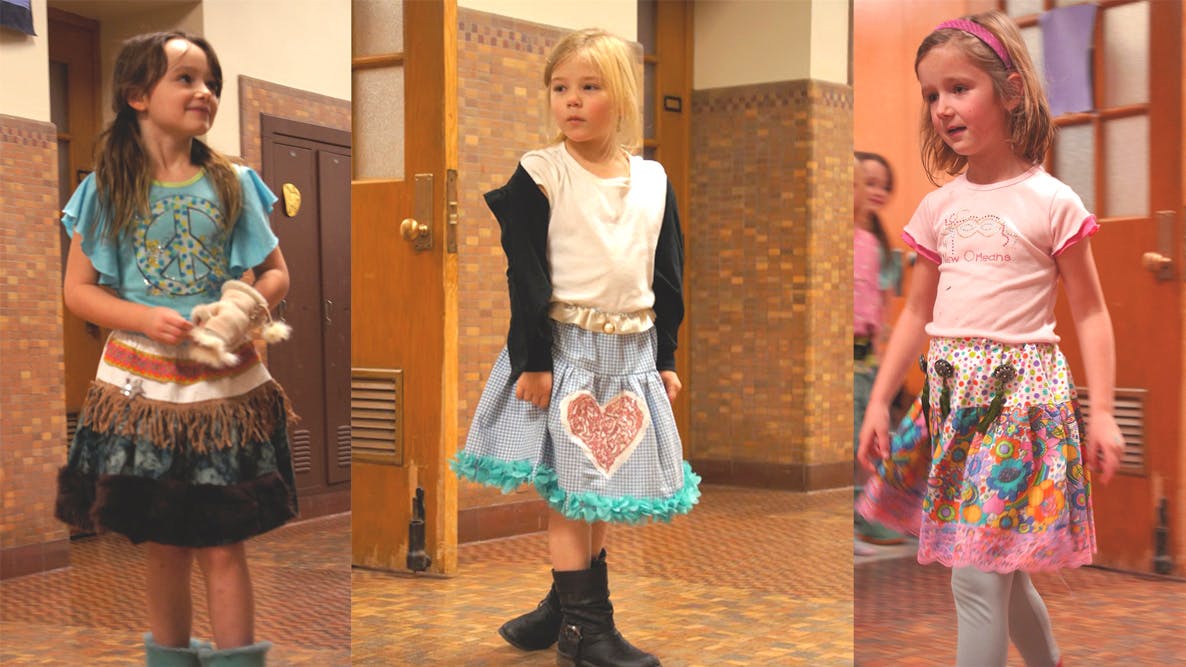What eight little girls re-taught me about design thinking
Leading an after-school fashion design and sewing club reveals the truisms behind design thinking.
What eight little girls re-taught me about design thinking
My six-year-old daughter wants to be a fashion designer when she grows up. Given the way she can rock a Sophia the First t-shirt and disco ball silver leggings, she may have an actual shot.
When the parent-teacher group at our grammar school asked for volunteers to lead after-school clubs, my daughter begged me to lead one on fashion design and sewing. “You work at Delve, right Mom? You should know how to do that.” Touché.
So design we did. A group six first grade and two second grade girls and I spent four weeks designing, assembling and sewing their skirts. And while I thought I would be imparting to them all of my design wisdom (Color wheel! Proportion!), it turns out that they re-taught me the basics of Design Thinking. Here is what I re-learned.
Lesson one: “Why can’t I make my skirt entirely out of faux fur?"
Design thinking involves asking why and why not. And the answer to “why can’t I?” is always, “oh, you can!
Lesson two: “I think that is good enough."
But it’s not straight! The elastic is twisted! This is what the grown-up in me wanted to say. But the skirt fit around her waist and twirled just fine, which were the only two requirements that mattered. So, yes, good enough can be…good enough.
Lesson three: “Can you just pin it?"
In my mind, the point of the club was to teach the girls to appreciate sewing. In their minds, it was about “decorating” with ribbon and buttons and bows. And even more importantly, it was about re-decorating over and over. Asking them if they were ready to stitch was crazy talk. Who would want to settle on just one thing? It wasn’t until 20 minutes before the big walk down the catwalk for the parents that any of them committed to their design. So the third lesson was iterate and keep iterating until the clock runs out.
Lesson four: “It’s not gonna turn out what you thought. It might be better.”
I loved it when one little girl reassured me with this line. We didn’t have enough gold ribbon for the hem, so she took the undersized piece and just slapped it kitty-corner across the center of the skirt. “See?” her face said, “No problem.” And she was right. Being open to what happens or what is possible often nets out better than what was expected.
I know that I am not cut out in any way to be a teacher. The difficulty I had wrangling a small group of girls for 55 minutes once a week confirmed that. But it is nice to know that I can still be a student.
